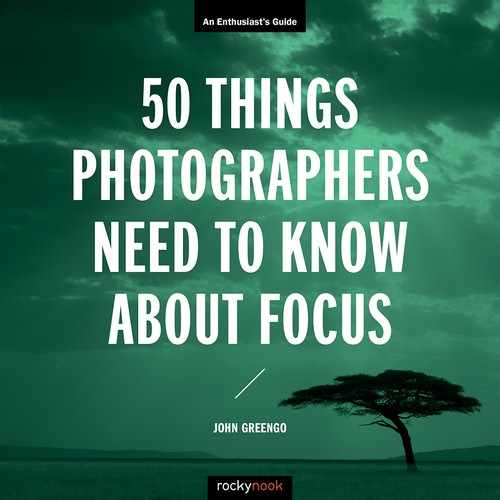Book Description
While focusing your camera seems like it should be a no-brainer—there’s autofocus, after all!—it’s often not a simple task. Depending on the shooting situation, your camera, and the countless scenarios that can “throw off” the focus, the task of achieving sharp images with great focus can be deceptively challenging.
If you’re a passionate photographer eager to learn the best ways to achieve tack-sharp focus in your images, these 50 focus-based principles are exactly what you need to take your work to the next level. With photographer and author John Greengo as your guide, you’ll quickly learn nearly four dozen techniques for achieving focus in every shooting situation. You’ll learn:
- • How to optimize autofocus no matter what kind of camera you have (DSLR or mirrorless)
- • How to master manual focus
- • Which focus modes and focus areas work best for different situations
- • How to use your camera’s autofocus aids, such as magnification and focus peaking
- • Techniques to keep your camera stable, either handheld or on a tripod
- • How shutter speed and aperture affect sharpness
Written in the author’s friendly and approachable style, and illustrated with examples that clearly show how each technique can help you capture great photos, 50 Things Photographers Need to Know About Focus is designed to be an effective, fast, and fun way to learn how to achieve great focus in your images—no matter what situation.
TABLE OF CONTENTS
- Chapter 1: Focus Basics
- Chapter 2: Autofocus
- Chapter 3: Mirrorless Autofocus
- Chapter 4: DSLR Autofocus
- Chapter 5: Customized Autofocus Controls
- Chapter 6: Autofocus Aids
- Chapter 7: Autofocus and Lenses
- Chapter 8: Manual Focus and Lenses
- Chapter 9: Exposure Control for Focus
- Chapter 10: Advanced Focusing Techniques
- Chapter 11: Other Focus Topics
